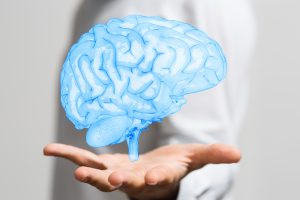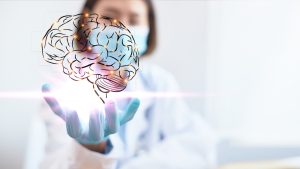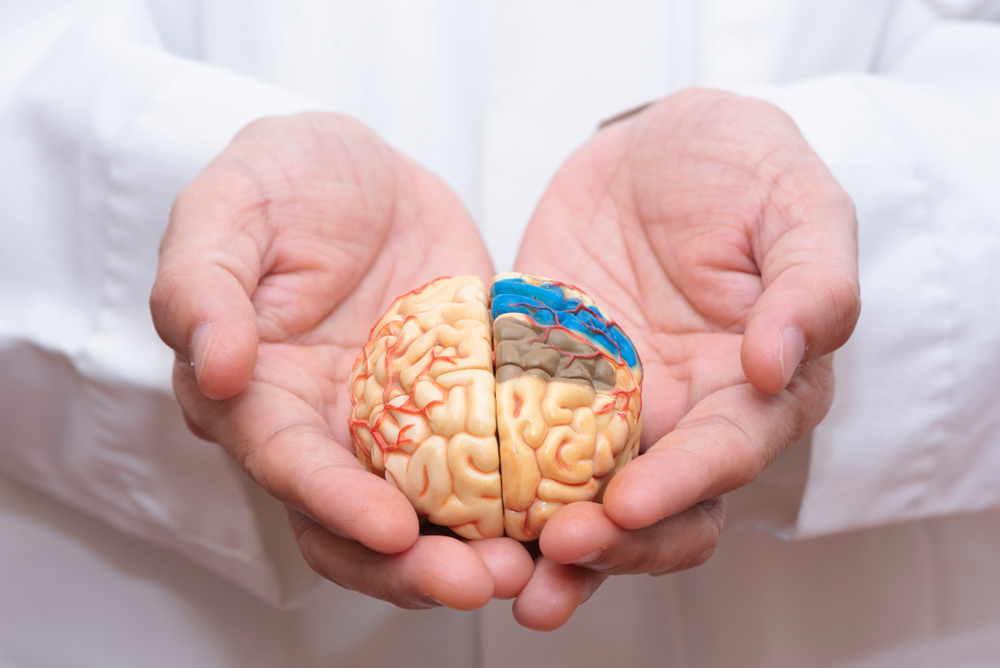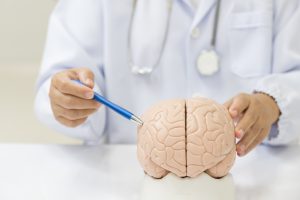Welcome to the Glioma Treatment Clinic at Emirates Hospitals Group, where we provide advanced care for individuals diagnosed with gliomas. Gliomas are a type of tumor that originates in the brain or spinal cord from glial cells, which support and protect the neurons. Although gliomas can be malignant, they are also often slow-growing, and treatment options vary based on the tumor’s type, location, and grade.
Our experienced team of neurosurgeons, oncologists, and medical professionals is committed to offering personalized treatment plans using the latest technology and minimally invasive techniques. We aim to provide the best possible outcomes, helping our patients lead healthier lives after treatment.
What is a Glioma?
A glioma is a tumor that arises from glial cells in the brain or spinal cord. These tumors can be benign or malignant and are categorized based on the type of glial cell from which they originate. The main types of gliomas include:
- Astrocytomas: Tumors originating from astrocytes (a type of glial cell).
- Oligodendrogliomas: Tumors that develop from oligodendrocytes (cells that provide support and insulation to nerve fibers).
- Ependymomas: Tumors that arise from ependymal cells lining the brain’s ventricles and spinal cord.
- Glioblastomas: The most aggressive and common type of malignant glioma.
Gliomas are classified by their grade, ranging from low-grade (slow-growing) to high-grade (fast-growing and malignant). Symptoms can vary widely, depending on the tumor’s size, location, and type, and may include headaches, seizures, vision problems, or cognitive changes.

Glioma Treatment in Dubai
At Emirates Hospitals Group, we offer a range of treatment options to manage gliomas, including surgery, radiation therapy, chemotherapy, and targeted therapies. Our approach is tailored to the patient’s specific condition, considering factors such as the tumor’s size, location, and grade.
- Surgical Removal: Surgical resection is often the first step in treating gliomas. The goal of surgery is to remove as much of the tumor as possible while minimizing damage to surrounding brain tissue. Our neurosurgeons use advanced imaging techniques, such as intraoperative MRI and neuronavigation, to guide the surgery and ensure optimal tumor removal.
- Minimally Invasive Surgery: For certain gliomas, minimally invasive techniques can be used to reduce recovery time and minimize the risk of complications. Stereotactic surgery and endoscopic methods may be used to remove the tumor through smaller incisions, offering a quicker recovery compared to traditional open surgery.
- Radiation Therapy: Radiation therapy, including techniques like stereotactic radiosurgery (Gamma Knife, CyberKnife), can be used to target gliomas precisely. It’s often used after surgery to destroy any remaining tumor cells or for tumors that are inoperable. Radiation therapy can also be combined with other treatments for a more comprehensive approach.
- Chemotherapy: Chemotherapy is commonly used in conjunction with surgery and radiation therapy, especially for high-grade gliomas like glioblastomas. Chemotherapy drugs such as temozolomide are used to target and kill cancerous cells. These may be administered orally or intravenously, and in some cases, chemotherapy wafers may be placed directly into the brain during surgery.
- Targeted Therapy and Immunotherapy: For malignant gliomas, especially glioblastomas, targeted therapies and immunotherapies may be recommended. These therapies aim to directly attack cancer cells by targeting specific proteins or genetic mutations that drive tumor growth, with fewer side effects than traditional chemotherapy.
Symptoms of Gliomas
Gliomas can cause a variety of symptoms, which depend on the tumor’s location, size, and grade. Common symptoms include:
- Headaches: Persistent or worsening headaches, often worse in the morning or when lying down.
- Seizures: Unexplained seizures can occur as a result of gliomas pressing on brain structures.
- Cognitive or Behavioral Changes: Difficulty concentrating, memory issues, confusion, or personality changes.
- Vision Problems: Blurred or double vision due to pressure on the optic nerve or brain areas controlling vision.
- Nausea and Vomiting: Caused by increased intracranial pressure due to the tumor.
- Weakness or Paralysis: Motor deficits, such as weakness on one side of the body, can occur if the tumor affects motor areas of the brain.
- Speech Difficulties: Difficulty speaking or understanding speech if the tumor affects areas of the brain responsible for language.
Diagnostic Approaches for Gliomas Surgery
Accurate diagnosis and assessment of gliomas are essential to developing an effective treatment plan. We use a range of diagnostic tools to evaluate the tumor:
- MRI (Magnetic Resonance Imaging): MRI is the gold standard for imaging gliomas, providing detailed pictures of the brain to identify the size, location, and characteristics of the tumor.
- CT Scan (Computed Tomography): CT scans may be used in emergency situations or when MRI is not available.
- Biopsy: A biopsy may be performed to confirm the tumor’s type and grade. This can be done either through a needle biopsy or during surgery.
- Genetic Testing: Molecular testing can be used to identify specific genetic mutations or biomarkers associated with gliomas, helping guide treatment options.
Recovery and Post-Treatment Care for Gliomas Surgery in Dubai
Recovery after glioma treatment varies based on the tumor’s location, size, and the type of treatment received. At Emirates Hospitals Group, we provide comprehensive post-treatment care to ensure a smooth recovery:
- Hospital Stay: After surgery, patients typically stay in the hospital for 3 to 7 days to monitor recovery and manage pain.
- Post-Surgery Monitoring: Patients will be closely monitored for signs of infection, complications, or neurological changes. Follow-up MRI scans are performed to track tumor removal and detect any recurrence.
- Rehabilitation: Depending on the tumor’s location and the effects of treatment, rehabilitation may include physical therapy, speech therapy, or cognitive therapy to help with recovery.
- Medication Management: Medications such as pain relievers, anti-seizure drugs, or corticosteroids (to reduce brain swelling) may be prescribed during recovery.
- Follow-Up Appointments: Regular follow-up visits will be scheduled to monitor recovery and track any changes in the tumor or potential recurrence.
- Lifestyle Adjustments: Lifestyle changes, including maintaining a healthy diet and managing stress, may be recommended to improve overall well-being during recovery.




